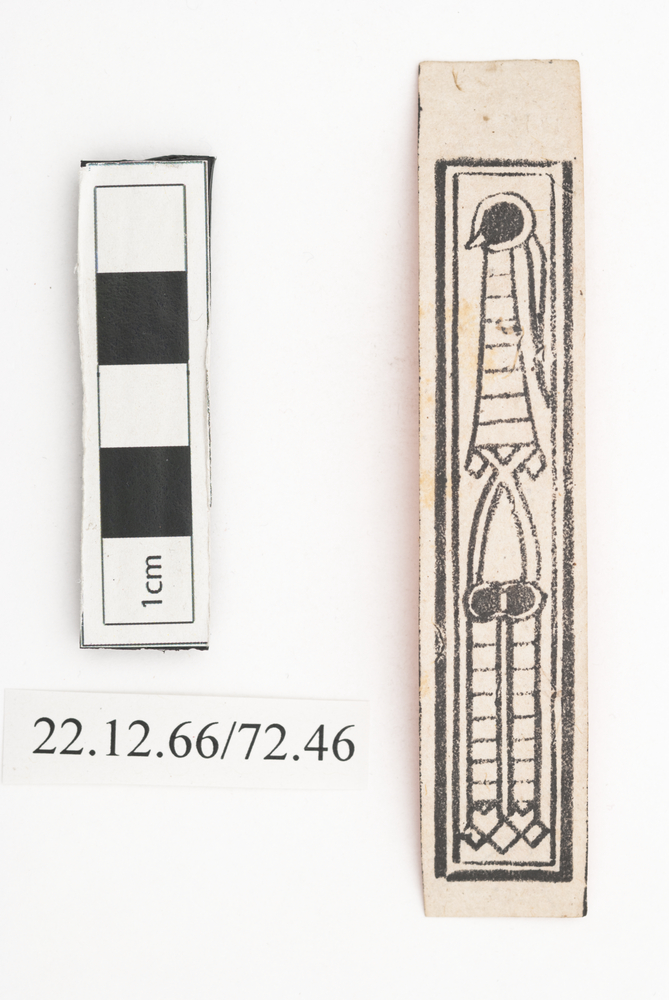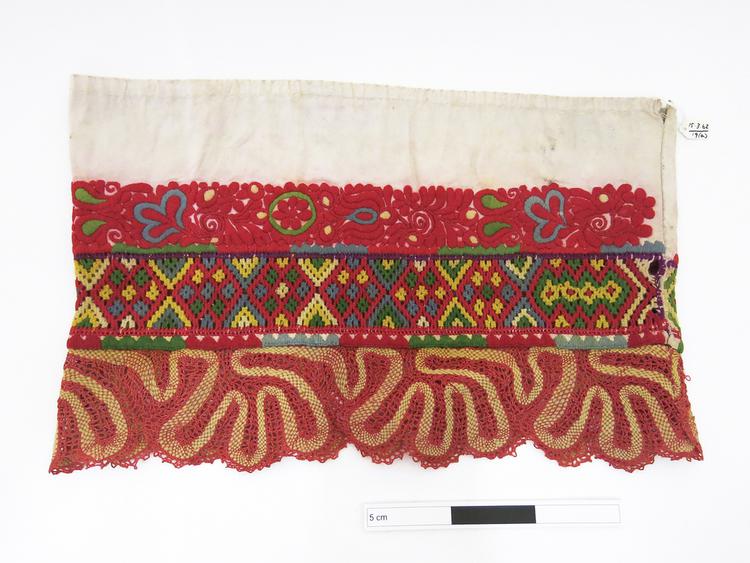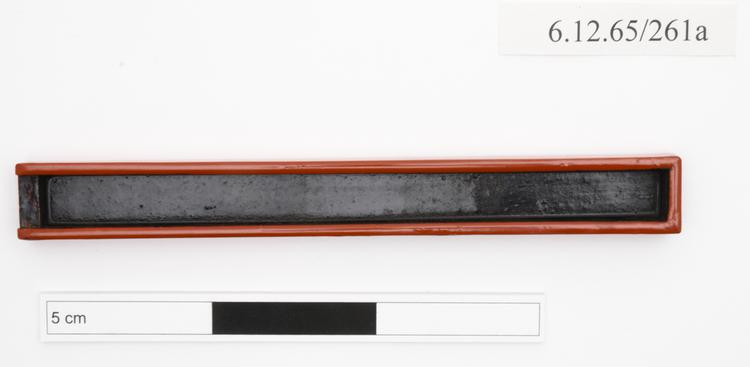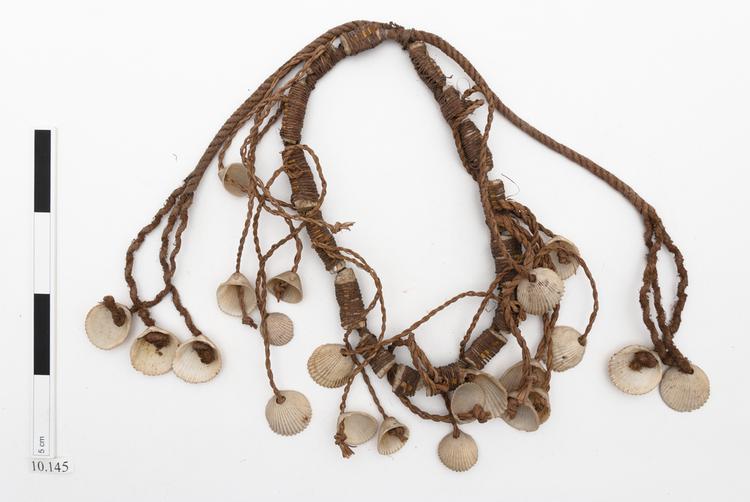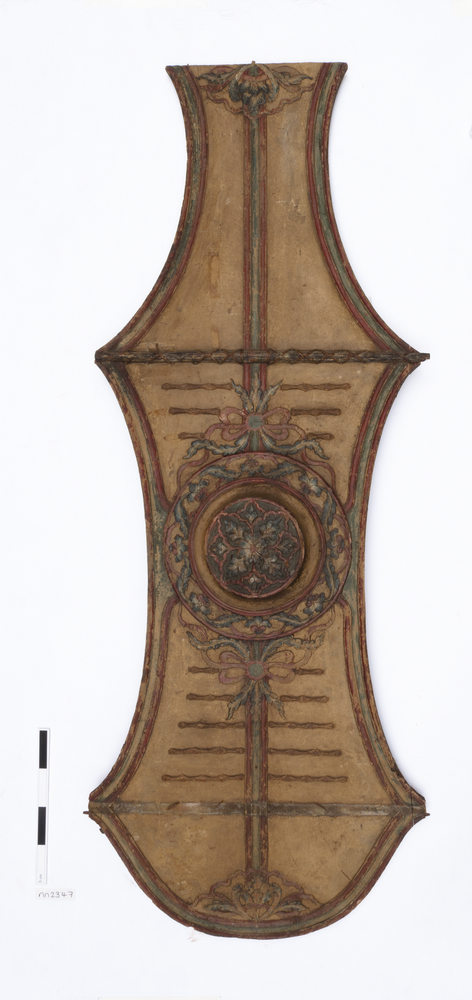
Wooden shield with central boss at front and carrying handle to the rear, carved in one piece so hand grip is in the hollowed out boss. The shield carved from a rectangular shape, formed with convex base, concave sides around boss, and above, a shorter section with concave sides. The top of the shield is flat but with projecting pegs at two points, and remains of a joint visible, suggesting a missing piece. Above and below the boss section concave sides there are small triangular wooden points added to emphasise the curved shape, held on by pegs and originally by horizontal strips of cane, flat on one side, that were tied onto the front and back running across the shield at these points: only one piece, above the boss, remains, with traces of the other below and on the back. Two sets of five small horizontal cane strips are tied on below the boss and two sets of three above. The centre of the boss, its surrounding ring on the shield face, the area above and below the boss and each end of the shield front all carved with floral motifs, painted in red and green, with a red edge, against the yellow ground colour of the shield. The side edges of the shield pierced with a series of holes all round (as though previously with tufts of hair). A short length of plaited string, and a loop of wire tied to the rear handle.
Unusual if from Borneo See photograph of similar shield, figure 18, page 556, captioned as from: `Bagobo, Mindanao. Wood 3 feet 11 inches long, carved and inlaid with shell’ in Stone, G.C. 1961 (originally 1934) A Glossary of the Construction, Decoration and Use of Arms and Armor in all countries and in all times New York: Jack Brussel The illustrated example appears to have a hair tufts as fringe along the sides, with a curved top and a flat base; the base with an additional piece fixed, as could have been added on to the pegs in nn2347.
fighting



